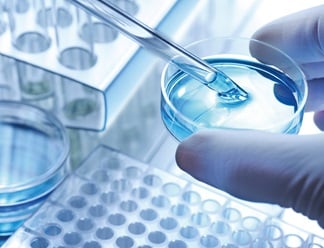European Norms (EN)

Antibiotic-associated diarrhoea is diarrhoea caused by the administration of antibiotics. The symptoms occur during or up to eight weeks after administration of the antibiotic and can be traced back to this cause. Other causes of diarrhoea can therefore be ruled out in the diagnosis.
When non-specific antibiotics are administered, it can happen that not only the infectious pathogens are inactivated, but also naturally occurring bacteria in the intestinal flora are decimated. If these bacteria are reduced, their metabolic products, which among other things ensure a healthy intestinal mucosa, are also missing. This leads to a reduced resorption of electrolytes and water, which results in osmotic diarrhoea. Due to a lack of competition, other bacteria can also spread more widely and rapidly, whose bacterial toxins can cause inflammation of the intestinal tract.
The bacterium Clostridioides difficile causes about a quarter of all antibiotic-associated diarrhoea. C. difficile is found in the intestines of about five per cent of adults, but the proportion is much higher in nursing homes and hospitals. Infections with C. difficile are among the most common nosocomial infections.
Other bacteria such as Staphylococcus aureus or fungi such as Candida albicans are also considered to cause AAD.
The symptoms of AAD can appear just a few hours after taking the antibiotic. In addition to diarrhoea, there is often cramping abdominal pain, nausea, and loss of appetite. However, the symptoms can also appear several weeks after the start of antibiotic therapy. After antibiotic therapy is stopped, the intestinal flora usually normalises on its own.
In most cases, antibiotic-associated diarrhoea is harmless, but due to the loss of fluids and salts, the disease can become life-threatening in rare cases. Hospitalised and immunocompromised patients in particular have an increased risk of contracting AAD caused by C. difficile. This can lead to a further complication called pseudomembranous colitis.
It occurs when the intestinal flora is so severely damaged by the intake of antibiotics that C. difficile can multiply unhindered and form toxins that can trigger inflammation of the large intestine.